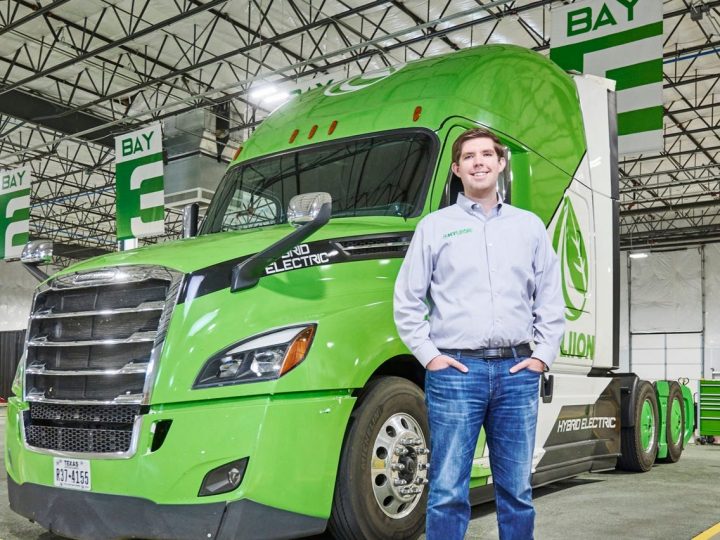
A company that wishes to offer its shares to the wider public and finally achieve what is often viewed as a company’s biggest milestone traditionally pursues an initial public offering (IPO)—but those times are changing. Both the state of a company when it goes public and the means used to achieve going public have been radically re-thought with the use of the special purpose acquisition company (SPAC), or “blank-cheque company,” reverse takeover, or reverse merger.
While it has many names, the concept is simple. In a traditional IPO, a company wishing to issue its shares widely follows securities laws through a variety of complicated processes, such as the prospectus requirement (where a company discloses information about its business) and eventually becomes able to issue shares of itself for investors to purchase.
A SPAC, on the other hand, is a company that has already gone public in the traditional way and now exists on public markets solely to bring a new company public, effectively sidestepping securities regulations (in a completely legal manner). When a SPAC finds a company that wants to be taken public, it enters into an agreement with that company to purchase all of its shares, rendering it a wholly owned subsidiary. In most cases, the SPAC then changes its legal name and stock exchange ticker to reflect the new brand of the company.
Ultimately, a SPAC is a company with a lot of money to spend and no actual operations. Its founders create the company, invest their own money into it, take it public, and then seek-out companies looking for a strategic way to enter the public market. SPACs are often specialized in particular industries such as tech and cannabis. In recent times, SPACs have been created by well-known names in order to gain investors’ trust. Bill Ackman and Richard Branson have recently launched SPACs of their own, as well as Belinda Stronach here in Canada.
2020 has seen some of the largest amounts of SPAC deals in a very long time, with sports betting site DraftKing, electric automaker Nikola and Playboy all using SPACs as their vehicle of choice. A large number of cannabis firms have also recently announced a reverse merger in order to access the public markets. 2020 has seen 120 SPAC deals in the US alone, raising $45 billion in capital. That is compared to 59 SPAC transactions the year prior, raising only $13 billion.
Choosing to bring a company public is a costly endeavour, with underwriters, advisors and lawyers to pay. Especially relevant in the time of COVID-19 is the reality that market prices are volatile, and investors may not be as optimistic about new ventures as they may have previously been, thereby significantly reducing the amount of capital that can be raised. As such, a SPAC is an attractive alternative to a traditional IPO because the founders of the SPAC (who are often well positioned financially) can absorb the high costs of the IPO process, creating a quick and rather cost-effective vehicle to access public markets for a company looking to do so.
A look at Hyliion
Hyliion is a leader in electrified powertrain solutions for Class 8 commercial vehicles and is led by its 28-year-old founder, Thomas Healy. Looking to bring its new product to the mainstream, Hyliion is looking for new sources of capital to ramp-up production and distribution. Looking at the traditional IPO process, Hyliion will see millions in underwriting, advisory and legal fees, a slow-time to market affording its competitors an opportunity to catch-up, as well as a high cost of capital due to COVID-19’s ravishing of the market.
Instead of the IPO route, Hyliion looks for alternatives and finds Tortoise Acquisition Corp (the SPAC). Tortoise is a blank cheque company incorporated in the Cayman Islands and trading publicly on the New York Stock Exchange. Since April 2019 when Tortoise went public, it has been seeking potential companies to acquire. On September 28th, 2020, Hyliion, Tortoise and their respective shareholders agreed to merge, effectively becoming one firm. Tortoise will now change its legal name to “Hyliion Holdings Corp.” and will change its NYSE ticker symbol from “SHLL” to “HYLN.”
And just like that, Hyliion exists on the public markets without ever proceeding through the IPO process. The transaction provides Hyliion $560 million in capital (initially raised when Tortoise went public in 2019) to pursue its business objectives, and the original founders and investors of Tortoise get to own a piece of the newly formed Hyliion. The reverse merger also makes Thomas Healy America’s youngest self-made billionaire.
Risks of the SPAC
While a SPAC may seem unnatural or in some way prohibited, they are not. A SPAC can be risky if the founders of the blank cheque company merge with a company that is ultimately set to fail or struggle. SPACs being formed by reputable founders and companies have calmed these worries slightly, although the fundamental risk remains: investors in a SPAC are buying the hopes and dreams of the SPAC’s founders. Investors of a SPAC do not know what company they will be taking public and are effectively gambling on management’s ability to make a good acquisition.
There is no way of hiding that the purpose of these blank cheque companies is to sidestep securities laws. Due diligence is being shifted from investors to the management of the SPAC company: instead of investors making an investment decision based on the information provided in a prospectus, they are leaving the investment decision to the management of the SPAC in which they are invested. In light of this, while reverse takeovers have proven to be a useful tool in the business world, they do have some risks that investors need to be wary of, as well as significant implications for securities laws.
